 Short Answer Type
Short Answer TypeTangents PA and PB are drawn from an external point P to two concentric circle with centre O and radii 8 cm and 5 cm respectively, as shown in Fig., If AP = 15 cm, then find the length of BP.
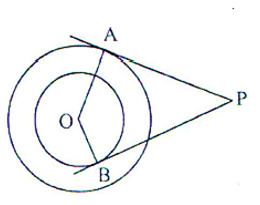
 Long Answer Type
Long Answer TypeIn fig., an isosceles triangle ABC, with AB =AB, circumscribes a circle. Prove that the point of contact P bisects the base BC.
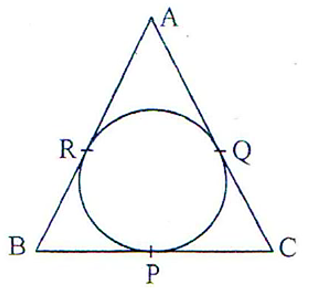
OR
In fig., the chord AB of the larger of the two concentric circles, with centre O, touches the smaller circle at C. Prove that AC = CB.
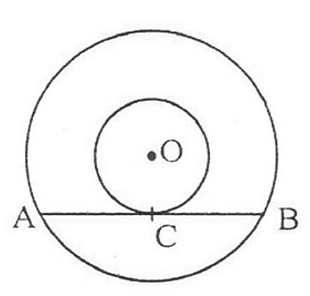
In fig., OABC is a square of side 7 cm. If OAPC is a quadrant of a circle with centre O, then find the area of the shaded region.
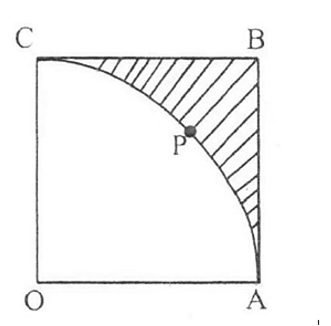
A point P divides the line segment joining the points A(3,-5) and B(-4, 8) such that . If P lies on the line x + y = 0, then find the value of K.
If the vertices of a triangle are (1, -3), (4, p) and (-9, 7) and its area is 15 sq. units, find the value (s) of p.
Prove that the parallelogram circumscribing a circle is a rhombus.
OR
Prove that opposite sides of a quadrilateral circumscribing a circle subtend supplementary angles at the centre of the circle.
Let ABCD be a parallelogram such that its sides touching a circle with centre O.
We know that the tangents to a circle from an exterior point are equal in length.

AP = AS .......[Tangnts from point A] .......(i)
BP = BQ .......[Tangents from point B] .......(ii)
CR = CQ .......[Tangents from point C] .......(iii)
and, DR = DS .......[Tangents from point D] ........(iv)
Adding (i), (ii), (iii), and (iv), we get
AP + BP + CR + DR = AS + BQ + CQ + DS
(AP + BP) + (CR + DR) = ( AS + DS) + (BQ + CQ)
AB + CD = AD + BC
2AB = 2BC [ ABCD is a parallelogram AB = CD and BC = AD]
AB = BC
Thus, AB = BC = CD = AD
Hence, ABCD is a rhombus.
OR
A circle with centre O touches the sides AB, BC, CD and DA of a quadrilateral
ABCD at the points P, Q, R and R respectively.
To prove:
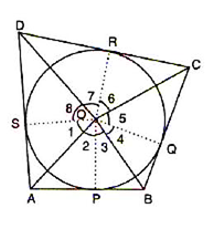
Construction: Join OP, OQ, OR and OS.
Proof: Since the two tangents drawn from a external point to a circle
subtend equal angles at the centre.
Hence proved.
From a solid cylinder of height 7 cm and base diameter 12 cm, a conical cavity of same height and same base diameter is hollowed out. Find the total surface area of the remaining solid.
OR
A cylindrical bucket, 32 cm high and with radius of base 18 cm, is filled with sand. This bucket is emptied on the ground and a conical heap of sand is formed. If the height of the conical heap is 24 cm, then find the radius and slant height of the heap.
